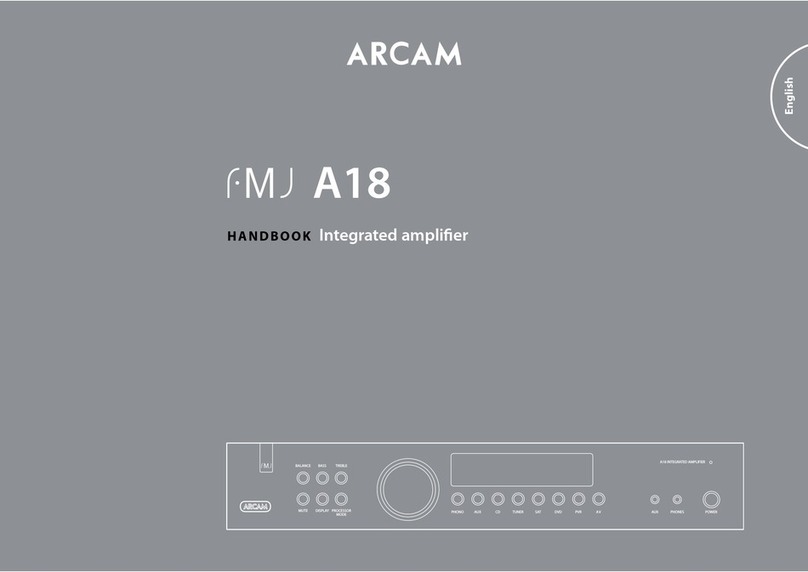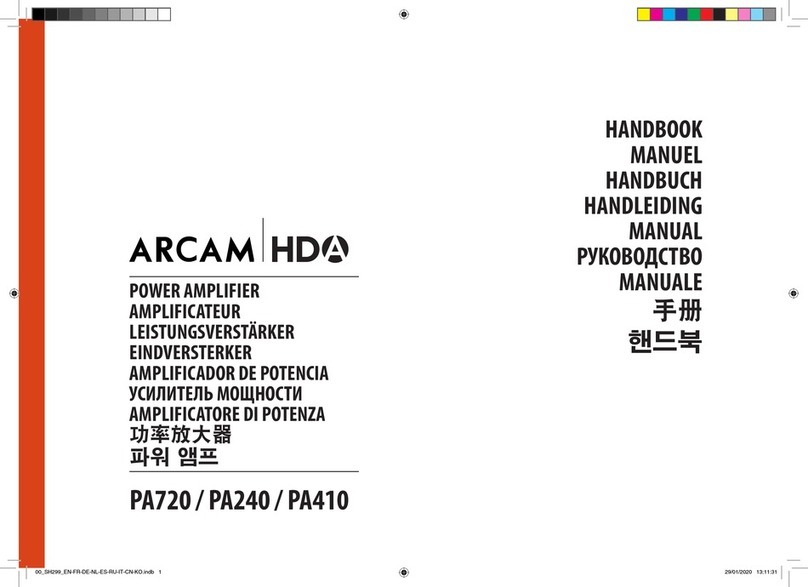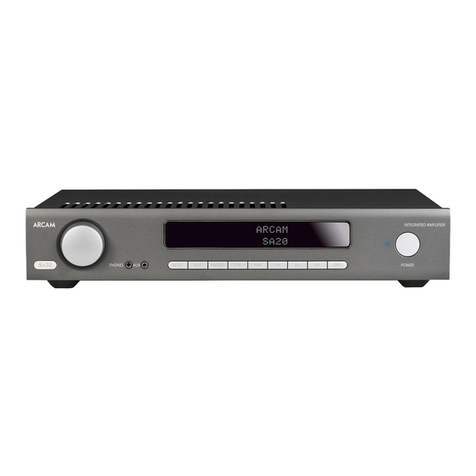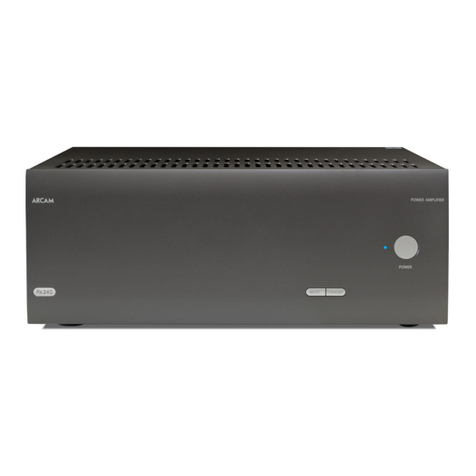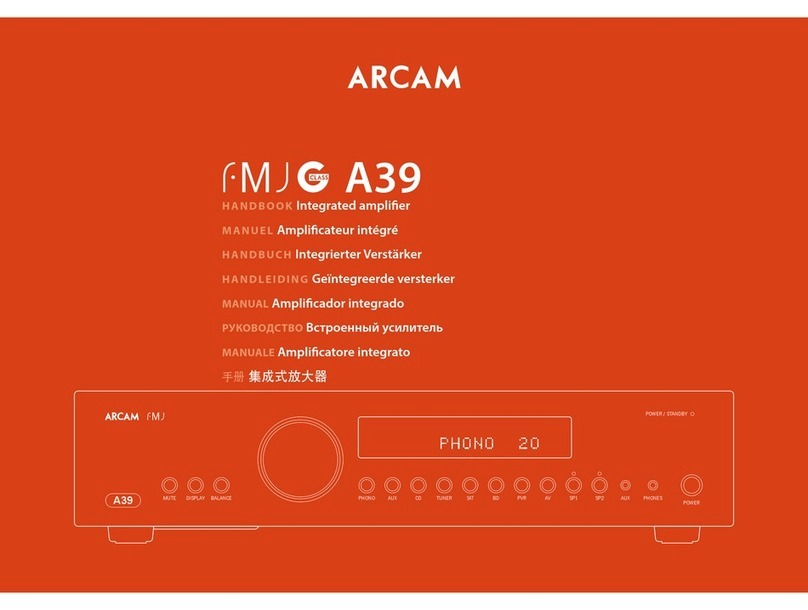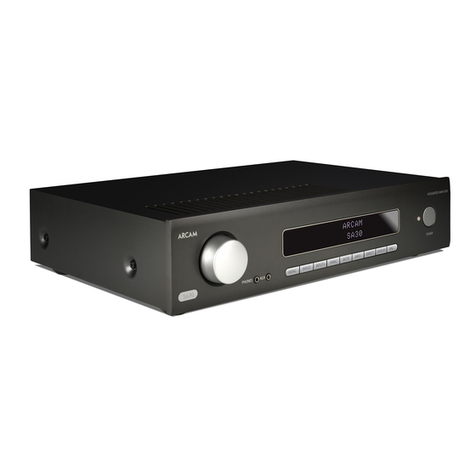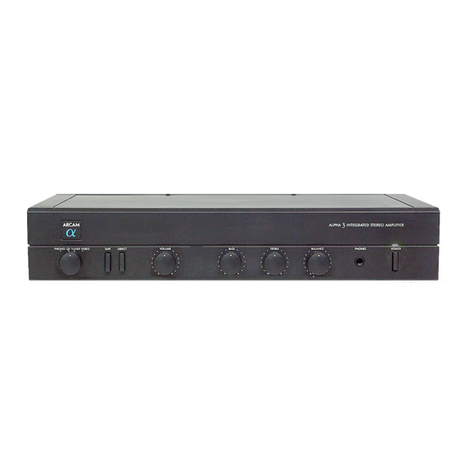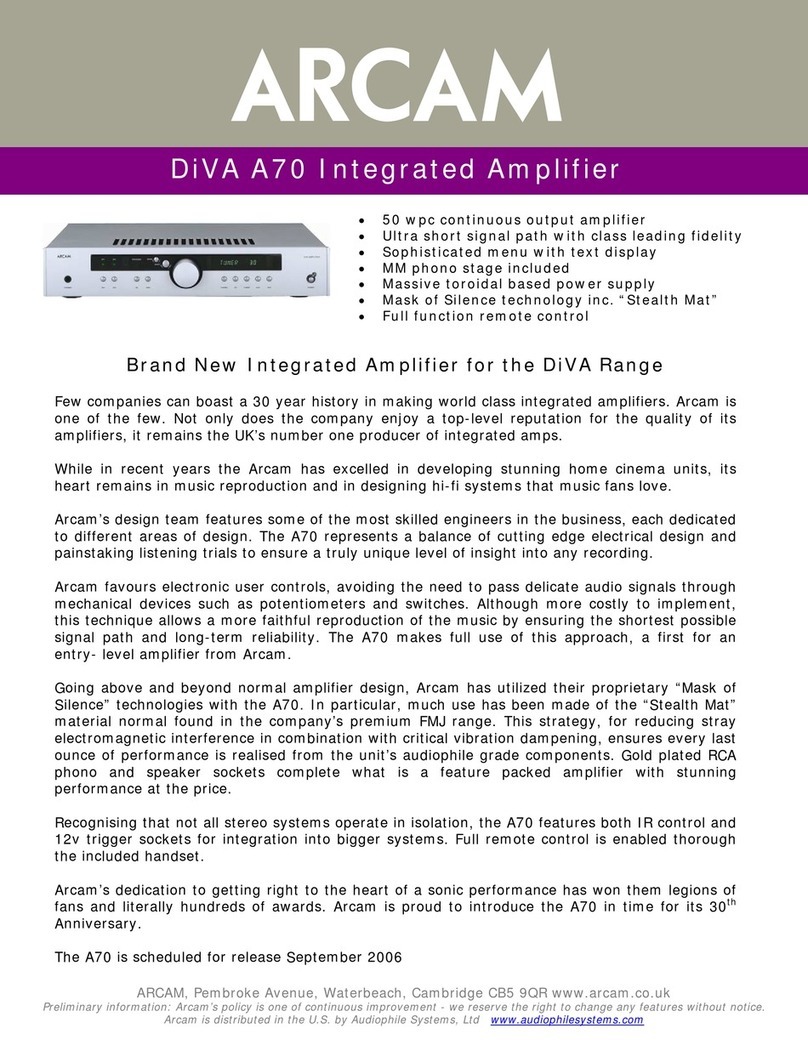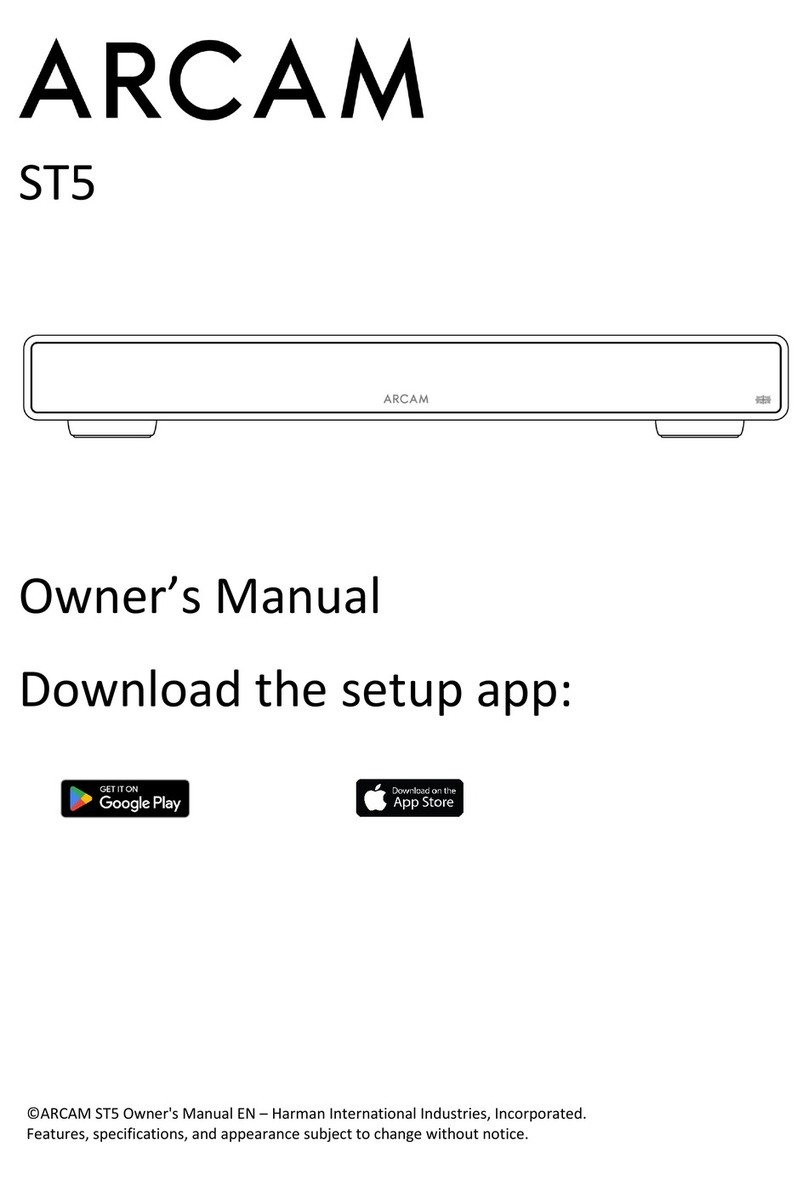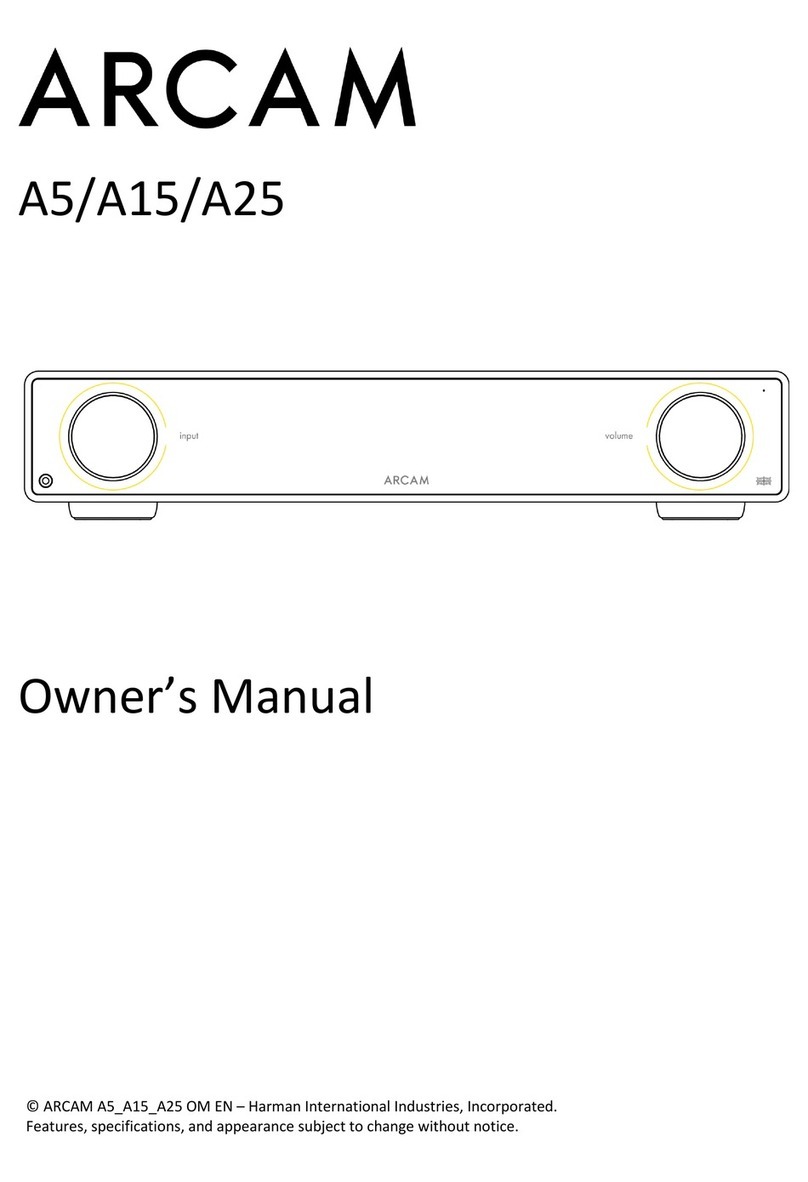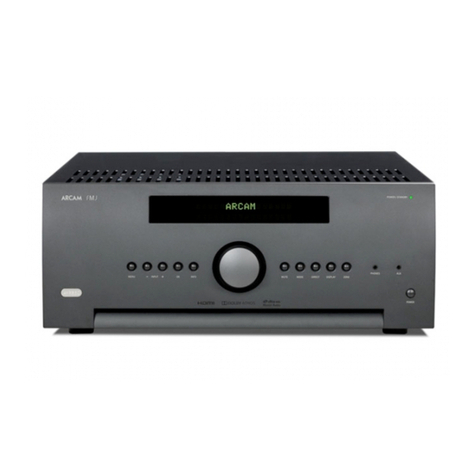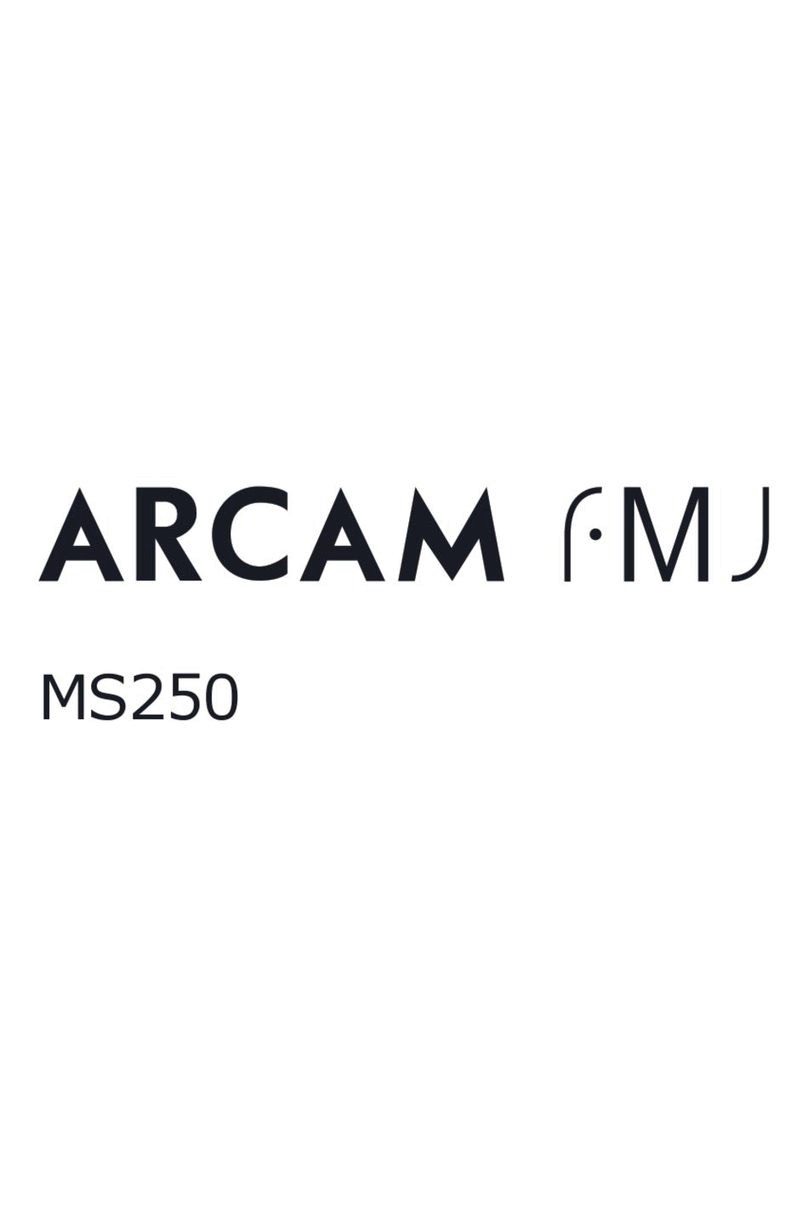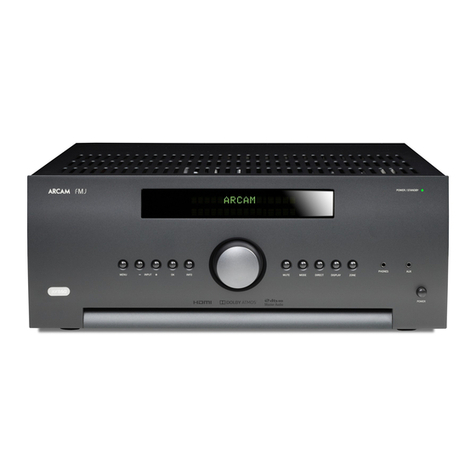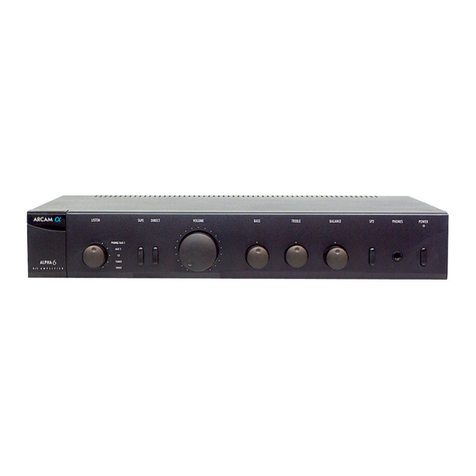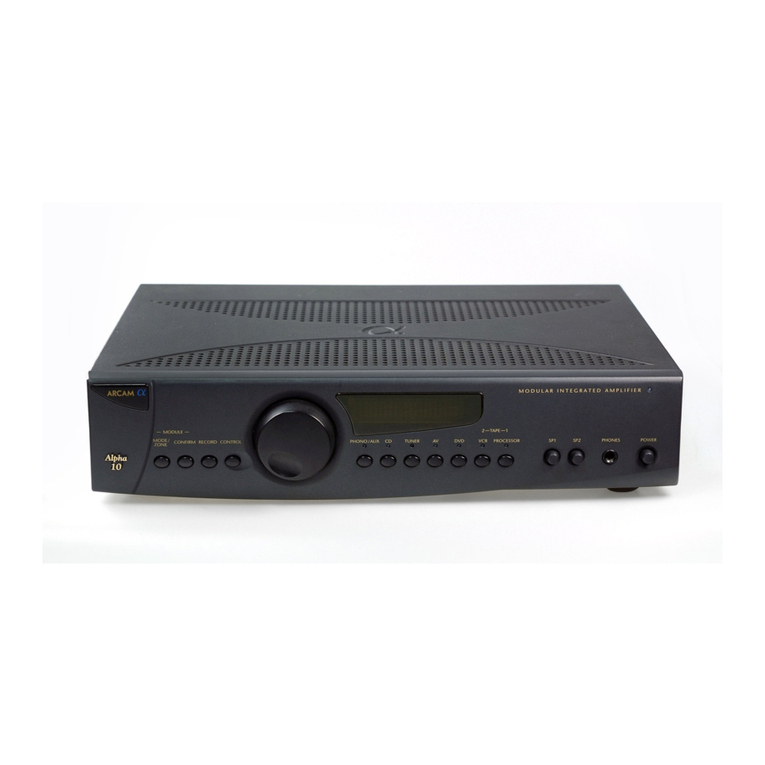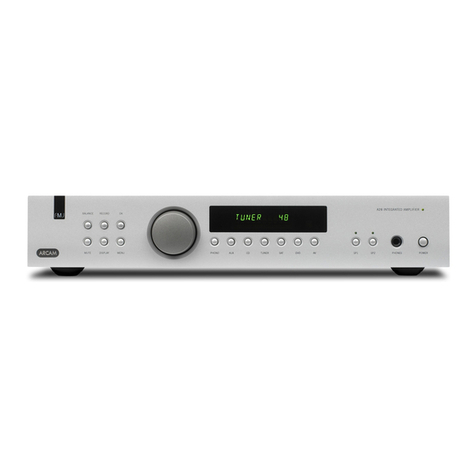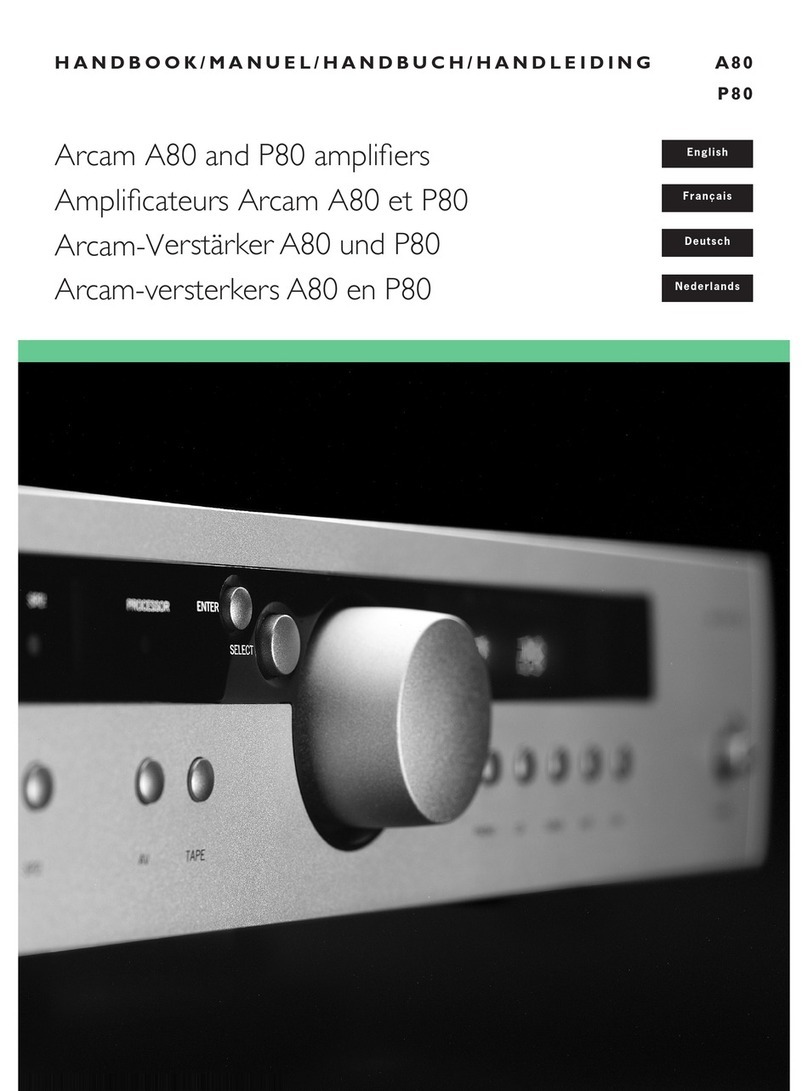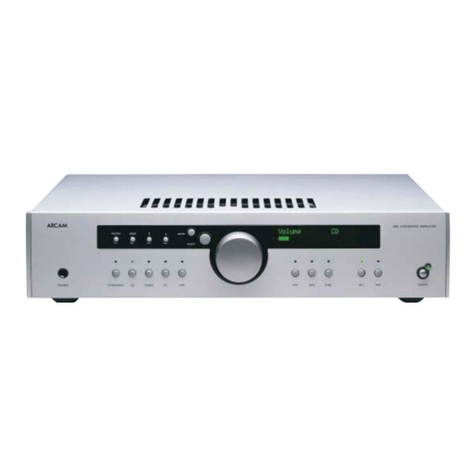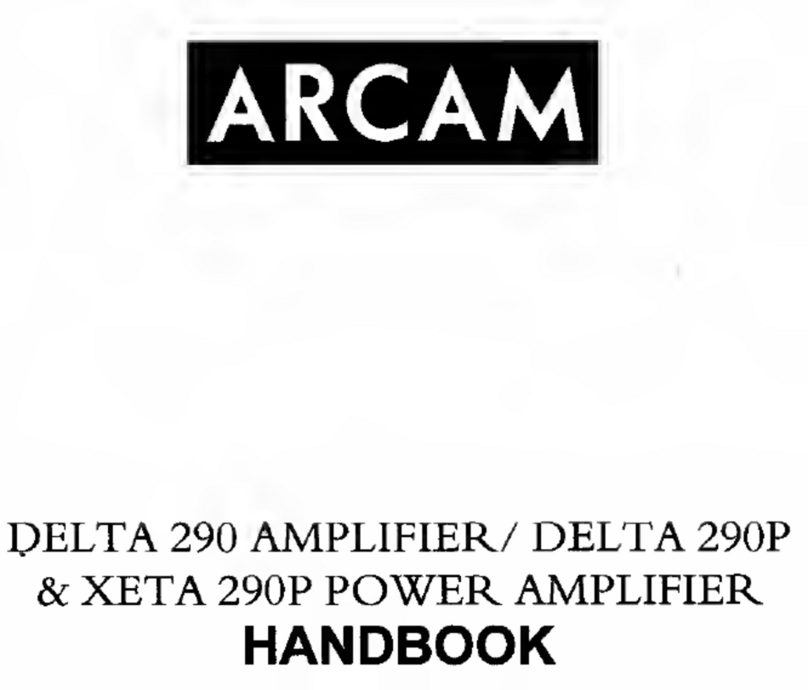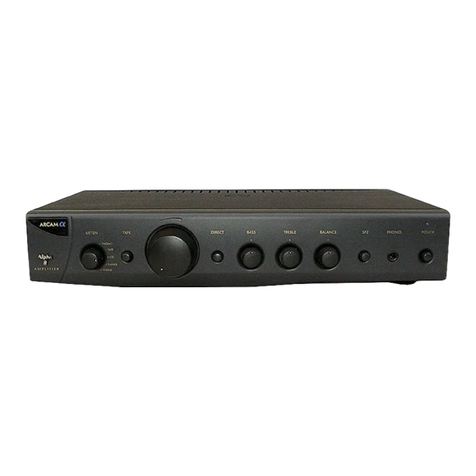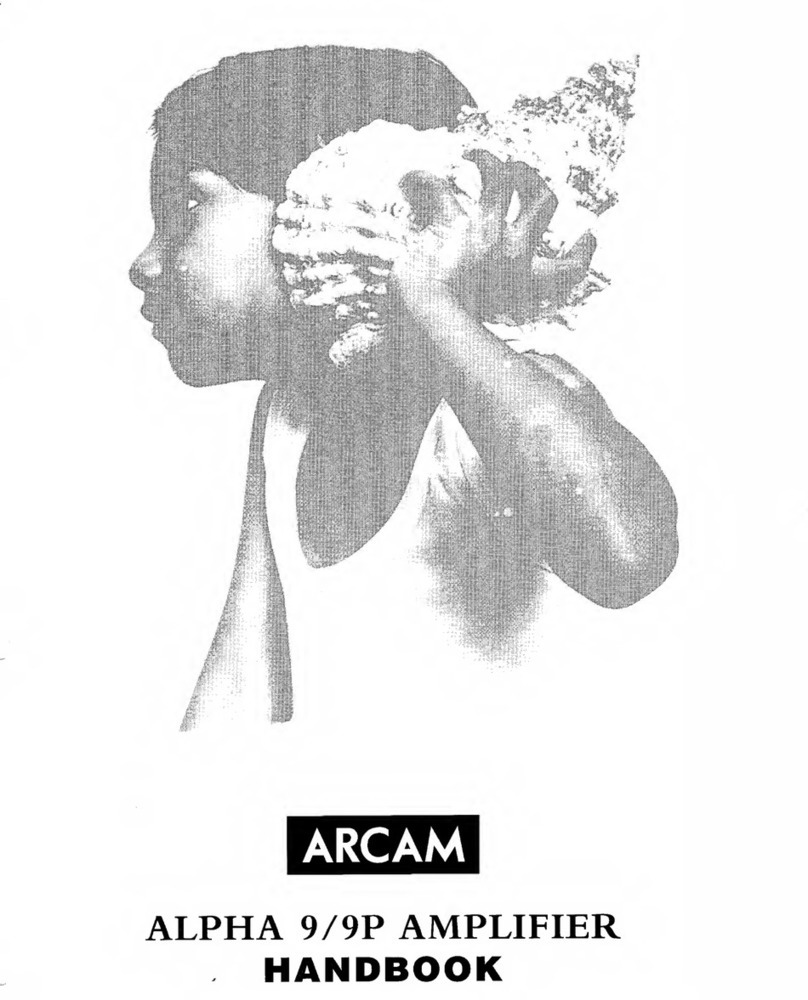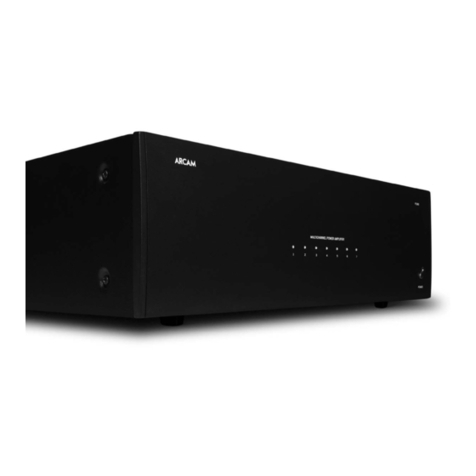CONNECTING TO A POWER SUPPLY
WRONG PLUG?
Check that the plug supplied with the unit fits your supply and that
your mains supply voltage agrees with the voltage setting (115V or
230V) indicated on the rear panel of the unit 2 before plugging in.
If your mains supply voltage or mains plug is different, consult your
Arcam dealer or Arcam Customer Support on +44 (0)1223 203203.
The product must be earthed.
MAINS LEAD
The appliance is normally supplied with a moulded mains plug already
fitted to the lead. If for any reason the plug needs to be removed, it
must be disposed of immediately and securely, as it is a potential shock
hazard when inserted into the mains socket. Should you require a new
mains lead, contact your Arcam dealer.
PLUGGING IN
Push the plug (IEC line socket) of the power cable supplied with the
unit into the socket (POWER INLET) 1 in the back of the unit. Make
sure it is pushed in firmly.
Put the plug on the other end of the cable into your power supply
socket and switch the socket on.
STANDBY POWER
For remote standby operation, the amplifier’s control power supply is
kept powered up all the time the unit is connected to the mains supply.
The front panel power switch powers down all other circuitry. Power
consumption in this mode is less than 2W.
This means that even though the power switch is off, it may be possible
to hear a slight residual hum coming from the mains transformer inside
the amplifier. This is perfectly normal. If the unit is to be left unused for
an extended period, we recommend that it is disconnected from the
mains supply by switching it off at the wall socket.
CONNECTING TO OTHER EQUIPMENT
The use of high quality interconnect cables to and from your amplifier
is recommended to ensure the best sound quality. Sockets marked
L (and R) on your amplifier should only be connected to sockets
marked L (and R) on other equipment. All the line inputs have the
same sensitivity and may be used with equipment other than that
labelled, if needed.
TAPE/PROC RECORD OUT 8 – Connect these output sockets
to the input sockets of your cassette deck (usually labelled RECORD).
TAPE/PROC PLAY IN 9 – Connect these input sockets to the
output sockets of your cassette deck (usually labelled PLAY). If you do
not have a cassette deck you can use this input for other (line level)
equipment, such as a CD player, tuner, VCR, etc., but not a turntable.
VCR/TAPE2 RECORD OUT bk – These output sockets can
be connected to the input sockets of VCR/second recorder (usually
labelled RECORD).
VCR/TAPE2 PLAY IN bl – Connect these input sockets to the
output sockets of your VCR/second recorder (usually labelled PLAY).
Alternatively, you can use this input for other (line level) equipment
such as a CD player, tuner, etc., but not a turntable.
DVD bm – Connect this input to the audio outputs of a DVD player.
AV bn – Connect this input to audiovisual equipment such as a VCR,
laserdisc player, satellite or Nicam tuner.
TUNER bo – Connect this input to the audio outputs of your radio
tuner.
CD bp – Connect this input to the audio outputs of your CD player
or DAC (digital to analogue converter).
AUX bq – The FMJ A32 has the phono board fitted as standard,
so the AUX connection becomes a line level output carrying the
equalised phono signal. This output can be connected to a tape deck,
etc.
PHONO bq – Connect this input to the audio outputs of your
turntable. This Phono Module is compatible with most high output
moving coil and moving magnet cartridges (MM) and low output
moving coil cartridges (MC). MM or MC can be selected via the blue
switch on the rear panel.
Phono earth terminal – For connecting your turntable earth lead
(if fitted). Note that this terminal must not be used as a safety earth.
TRIG OUT and REMOTE IN 3 (12V in and out) – These
connections are for use in multi-room installations. In normal use
there is no need to make any connections to these sockets. If you are
bi-amping with a power amplifier and wish to power both units on or
off simultaneously, see page 11.
PRE/POWER AMPLIFIER CONNECTIONS
PWR IN 5 – To use your integrated amplifier as a power amplifier,
connect the output of your pre-amplifier to the PWR IN sockets.
Press in the PRE/PWR switch 7 on the rear panel to select separate
pre-amp/power amp mode. Under these circumstances your A32 has
exactly the same specification and performance as a power amplifier
(see page 8).
PRE OUT 6 – To use your integrated amplifier as a pre-amplifier,
connect the PRE OUT sockets to the input sockets of your power
amplifier. With a power amplifier of the correct gain (e.g. the P35
power amplifier) you can bi-amplify (‘bi-amp’) suitable loudspeakers,
giving significant improvements in sound quality (see page 13).
